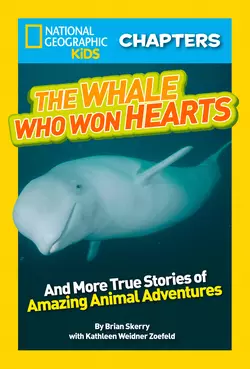National Geographic Kids Chapters: The Whale Who Won Hearts: And More True Stories of Adventures with Animals

National Kids и Brian Skerry
Тип: электронная книга
Жанр: Детская проза
Язык: на английском языке
Стоимость: 305.03 ₽
Статус: В продаже
Издательство: HarperCollins
Дата публикации: 16.04.2024
Отзывы: Пока нет Добавить отзыв
О книге: National Geographic Kids Chapters picks up where the best-selling National Geographic Readers series leaves off. This new series offers young animal lovers who are ready for short chapters lively, full-color true stories just right to carry in a backpack, share with friends, and read under the covers at night.Based on the hit feature in National Geographic Kids magazine, we bring you Animal Adventures! Featuring three amazing stories of explorer Brian Skerry and his incredible encounters with animals, written in fun and lively prose that empowers readers to devour page after page.